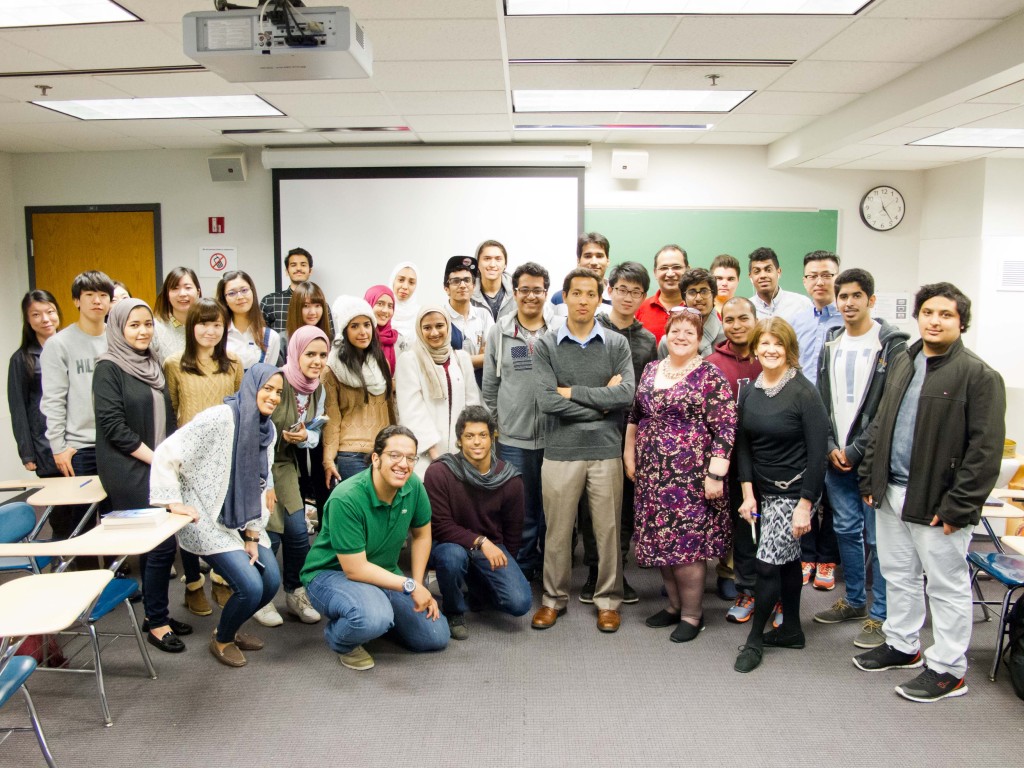by Khadijetou Diagana
“Everybody goes through a Salem phase” - Stacy Schiff.
When our teacher announced that we were going on a field trip to Salem, I was thrilled. I was curious to learn more about the infamous Witch Trials that took place in Salem during the 17th century. The Witch Trials are the subject of various mysteries, academic debates, theories, misconceptions, and fiction in not only literature but also in other mainstream outlets such as movies and television shows. As a consequence, I was eager to learn more about what happened during the mass hysteria that Salem experienced, and understand how this event went from a painful memory for the population of Salem to a sensational phenomenon that attracts thousands of tourists every year.
When I first arrived to Salem, I saw two different sides of the popular city. The first one was the touristic side; indeed many people around the world can be seen visiting the different museums, shops and monuments related to the universe of witches. For instance, on the wall of one of the many shops of Salem, I noticed a sign acknowledging the nineteen people who were tried and condemned for witchcraft. The sign also mentioned Giles Corey, who was pressed to death because he refused to plead guilty. Knowing that something so cruel and unfortunate happened hundred of years ago where I was standing made me feel uncomfortable and showed the devastating consequences of ignorance. On the other hand, Salem is also a regular city, where people go to work, run errands and take their kids to daycare; seeing both sides collide was interesting.
One of the places visited was the Witch House. It was an amazing learning experience. We saw how the people of Salem lived during the 17th century. The Witch House was built in 1675 and belonged to Jonathan Corwin, a wealthy man who was also a judge involved in the Witch Trials from 1692 to 1693. Entering the house felt like being in the 17th century. The different rooms of the property are so realistic and well conserved that you may have the impression of being an inhabitant of Salem in the 1600s. However, I found it quite surprising that even though the Corwins’ were wealthy, their house was modest and simple. The tour guide was well experienced and answered all of the burning questions my classmates and I had about the Witch Trials. For example, I was anxious to know what were the intentions of the two little girls who started the hysteria; I thought they had ill-intentions. However, the expert of the Salem events insisted that they didn’t have any malicious intentions. Instead, at that time the population of Salem was heavily influenced by Puritan beliefs, and they were also affected by paranoia of odd behaviors, such as the convulsions the little girls experienced, which were thought to be related to the devil and witchcraft. Furthermore, it was interesting to notice that the Witch Trials were remembered so well because all the aspect of the trials such as the defenses of the condemned and the sayings of the witnesses were documented.
The second place we visited while in Salem was the Witch Memorial, where the nineteen accused are remembered. On the ground, quotes of each of the people hanged are engraved; I found it beautiful and chilling. I was surprised to see fresh flowers on each of the benches dedicated to the nineteen innocent people. It means that even though it happened a long time ago, people always remember and acknowledge them. When I saw and read the names of each of the people accused, it seemed more real - they weren’t people alleged of practicing witchcraft or characters in a fiction book anymore, they were actual human beings who lost their lives because people did not see past their appearance and the gossip about them.
Even though the Salem Witch Trials were emotionally draining for the community of Salem, nowadays, it is an industry attracting thousands of people to their city each year. I believe that the sensationalism of the Witch Trials in Salem is bittersweet, because it is not just seen as a horrific historic event; today the city makes money out of the events that happened during the 17th century. For example, the gift shops sell t-shirts advertising the notion of witches and fear. In addition to that, many people travel to celebrate Halloween in Salem. All these examples can be seen as controversial because most of the time, societies prefer to forget something that deeply affected their history instead of using it as a way to benefit their economy and the employment of the local people.
To sum up, going to Salem helped me understand why the Witch Trials are so well remembered and how they affected the persons living there. I can now say that I have a deep knowledge of the Salem Witch Trials that took place during the 17th century. The field trip to Salem gave me a more humanistic point of view of the Witch Trials. I hope that the stories of the people involved in the Salem events will continue to be told to the next generations, as it is important in a society to rise above and not base perceptions of people on appearances and malicious talk. We are more than what people say we are. Lastly, I hope that they keep the memory of the Witch Trials alive in an educational way and not let the sensationalism take over.













 by Katja Davidoff
by Katja Davidoff